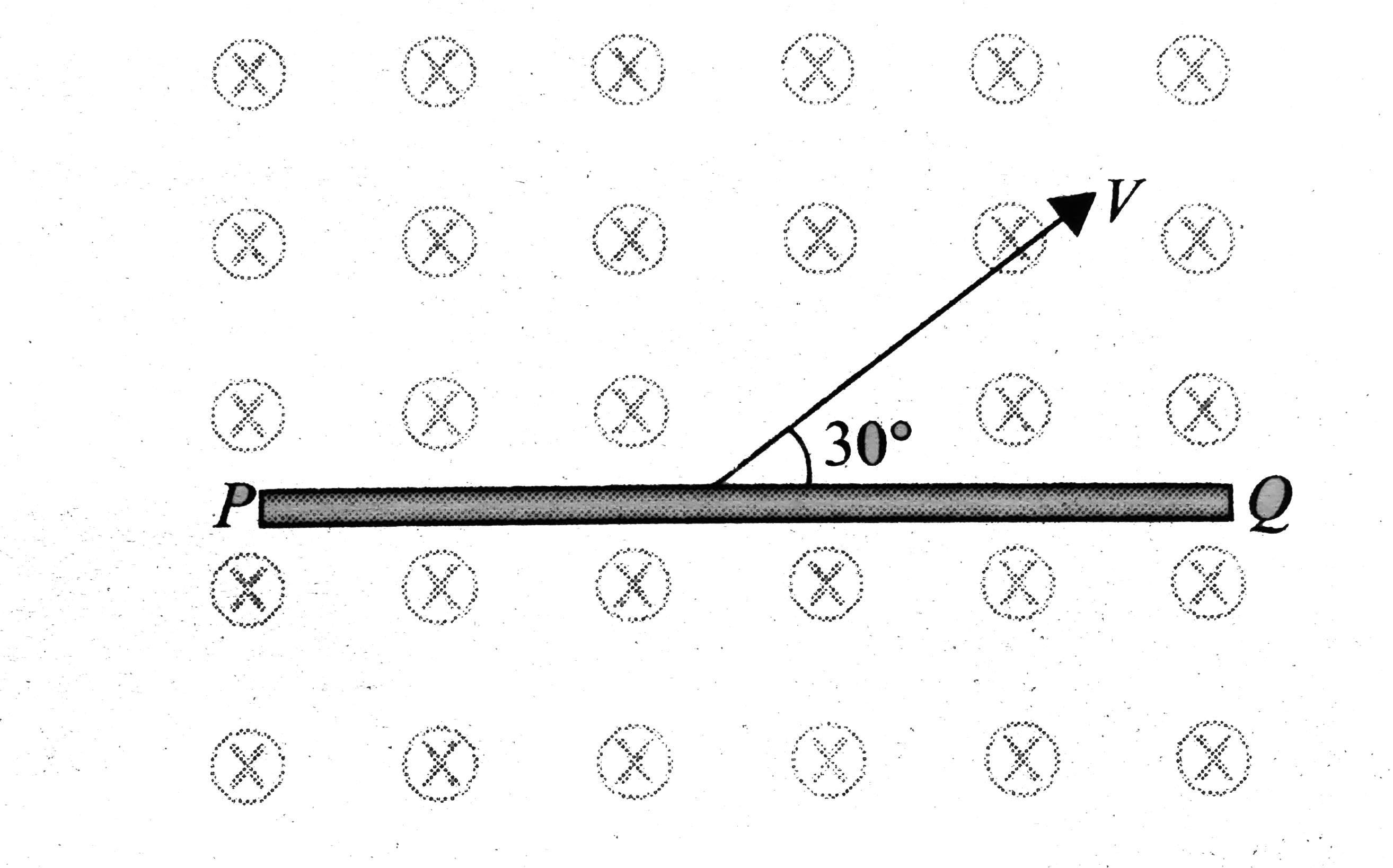A 20 cm long conducting rod is set into pure translation with a uniform velocity of 10cm s ^(-1) perpendicular to its length. A uniform magnetic field of magnitude 0.10 T exists in a direction perpendicular to the plane of motion. Find emf developed in the rod.Solution in Tamil
Herel=20cm,=0.2m,
v=10cms=0.1m/s
B=0.10T.
(a)F=qvB
=1.6×10−19×1×10−11×10−1
=1.6×10−21N
(b)qE=qvB
⇒E=1×10−1×1×10−2V/m.
Thisisvreateddue→the∈ducedemf.
(c)Motionalemf=Bvl
=0.1×0.1×0.2
=2×10−3V.
Topper's Solved these Questions
- BOOK - HC VERMACHAPTER - ELECTROMAGNETIC INDUCTIONEXERCISE - Objective 210videos
ELECTROMAGNETIC INDUCTION
- BOOK - HC VERMACHAPTER - ELECTRIC FIELD AND POTENTIALEXERCISE - Exercises75videos
ELECTRIC FIELD AND POTENTIAL
- BOOK - HC VERMACHAPTER - ELECTROMAGNETIC WAVESEXERCISE - Exercise9videos
ELECTROMAGNETIC WAVES
Similar Questions
A bar magnet is moved along the axis of a copper ring placed far away from the magnet. Looking from the side of the magnet, an anticlockwise current is found to be induced in the ring. Which of the following may be true?
02:31View SolutionFind the dimensional formula of ε0 .
03:19View SolutionShow that the dimensions of the displacement current (ε0dΦEdt) are that of an electric current.
02:47View SolutionA wire of length 10cm translates in a direction making an angle of 60∘ with its length. The plane of motion is perpendicular ot a uniform magnetic field of 1.0 T that exists in the space. Find the emf induced between the ends of the rod if the speed of translation of 20 cm s^(-1).
03:47View SolutionA metal rod moves at a constant velocity in a direction perpendicular to its length. A constant, uniform magnetic field exists in space in a direction perpendicular to the rod as well as its velocity. Select the correct statements(s) from the following
01:57View SolutionA conducting rod PQ of length l=2m is moving at a speed of 2ms−1 making an angle of 30∘ with its length. A uniform magnetic field B=2T exists in a direction perpendicular to the plane of motin. Then
 04:09View Solution
04:09View SolutionA conducitng rod AB of length l=1m moving at a velcity v=4m/s making an angle 30∘ with its length. A uniform magnetic field B=2T exists in a direction perpendicular to the plane of motion. Then :
 02:19View Solution
02:19View SolutionA copper rod of length L rotates with an angular with an angular speed 'ω' in a uniform magnetic field B. find the emf developed between the two ends of the rod. The field in perpendicular to the motion of the rod.
02:20View SolutionA conducting rod of unit length moves with a velocity of 5m/s in a direction perpendicular to its length and perpendicular to a uniform magnetic field of magnitude 0.4T . Find the emf induced between the ends of the stick.
View SolutionA rod of length l is moved horizontally with a uniform velocity v in a direction perpendicular to its length through a region in which a uniform magnetic field is acting vertically downward. Derive an expression for the emf induced across the ends of the rod.
02:21View SolutionA conducting rod of length L rotates with angular speed ω in a uniform magnetic field of induction B which is perpendicular to its motion .The induceed emf developed between the two ends of the rod is
02:44View SolutionUniform magnetic field B, exists in the vertical downward direction. A rod whose length is kept horizontal and is moved with velocity v perpendicular to its length. Motional emf developed across the length of the rod is
06:10View SolutionA wire of length 10cm translates in a direction making an angle of 60∘ with its length. The plane of motion is perpendicular ot a uniform magnetic field of 1.0 T that exists in the space. Find the emf induced between the ends of the rod if the speed of translation of 20 cm s^(-1).
02:28View SolutionA copper rod of length L rotates with an angular with an angular speed 'ω' in a uniform magnetic field B. find the emf developed between the two ends of the rod. The field in perpendicular to the motion of the rod.
04:04View SolutionDerive an expression for motional emf, induced across the end of a conducting rod moving in a uniform perpendicular magnetic field.
02:48View SolutionA conducting rod AB of length l=1m is moving at a velocity v_A=4m//s making an angle 30^@ with its length. A uniform magnetic field B=2T exists in a direction perpendicular to the plane of motion. Then
02:30View Solution

